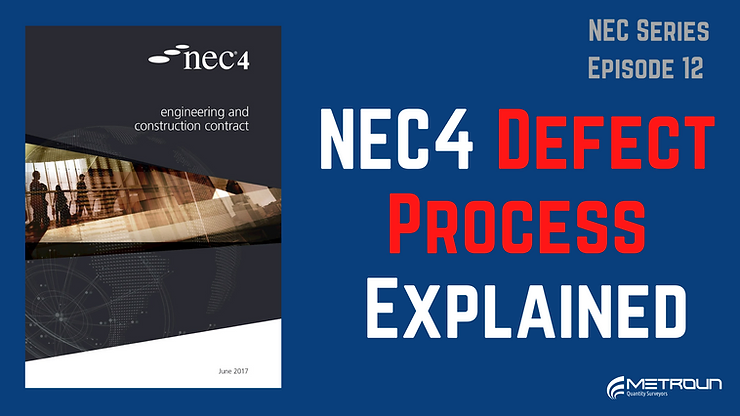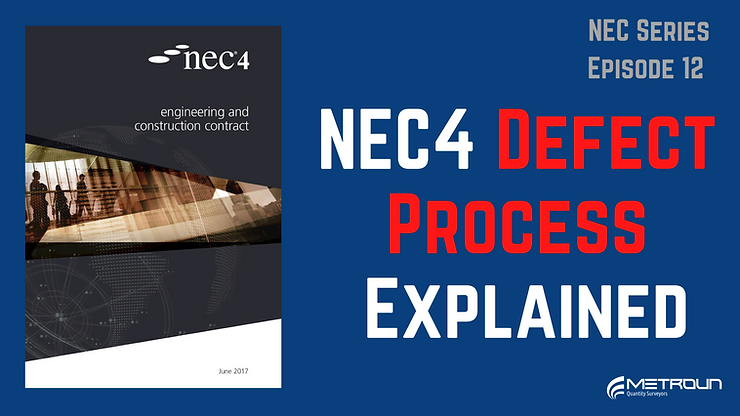What happens when the client discovers a defect on your project? It might not be something you’ve thought about before. If so, you may be unaware what your contract says about defects. In this article we’re going to look at how the NEC4 deals with defects and what you can do to ensure you’re prepared when the situation arises.

NEC4 Engineering and Construction Contract (ECC) defines a defect in clause 11.2 (6) “a part of the works which is not in accordance with the scope” and further clarifies in Clause 41.4 that “if a test or inspection shows that any work has a Defect, the Contractor corrects the Defect and the test or inspection is repeated”.
Let’s look into the defect process and timeline under the NEC. Under the ECC a defects date is defined in the contract data as being a period in weeks (usually 52 weeks) “after Completion of the whole of the works”. Until the defects date, the Supervisor and Contractor each notify the other of Defects as soon as they find them. In short, the client usually has up to a year after works are completed to notify a Defect.
We also have the defect correction period. This is also defined in the contract data (usually 3 weeks). Unlike the defect date the defect correction period identifies how long the contractor has to rectify a Defect which has been notified to them.
Debates often arise about who is responsible for the defect. The NEC states that one issue which often arises, is where design is not the contractor’s responsibility. This results in a assessment whether a particular defect is a result of design or workmanship. This is a cause for many disputes and there have been court cases aiming to establish this. One example is Imperial Chemical Industries Ltd (ICI) v. Merit Merrell Technology Ltd (MMT), [2017] EWHC 1763 (TCC). In this case, a number of issues arose in this case over the quality of the welding, was this a design issue, or workmanship issue though? The courts decided this was a design issue. The reason being is that it was found within the minutes of a post-tender meeting that the testing regime for the works was to be visual inspection and 10% dye penetration, rather than radiology. This method, was established before works started and approved by the client and PM before welding commenced. The client was trying to hold the contractor to a higher standard in terms of quality of work. However, declined to contractor the means (radiology) to ensure this standard was met. The judge therefore, sided with the contractor.
Debates like above highlight the importance of record keeping. It may seem like minor inconvenience at the time. However, you can appreciate how important every detail is when assessing disputes or cases.
Why not watch our video on this topic?






